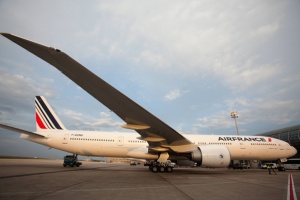IATA AGM 2015: Domestic traffic drives aviation demand higher

The International Air Transport Association has announced global passenger traffic results for April showing robust demand growth compared to April 2014.
Total revenue passenger kilometres rose 5.9 per cent in April, while available seat kilometres increased by 6.1 per cent.
However, load factors slipped 0.1 percentage points to 79.4 per cent.
Domestic demand grew by 7.2 per cent, outpacing international demand which grew by 5.2 per cent compared to April 2014.
“Demand for connectivity remains strong.
“That’s positive news.
“But the performance of the industry is multi-tiered.
“Middle East and Asia-Pacific based carriers led with growth well above the 5.9 per cent average, while carriers in Europe and the Americas were below it.
“And African airlines reported a contraction compared to the previous year,” said Tony Tyler, IATA chief executive.
April international passenger demand rose 5.2 per cent compared to April 2014.
Airlines in all regions except Africa recorded growth led by the Asia-Pacific and Middle East.
Capacity climbed 5.9 per cent and load factor dipped 0.5 percentage points to 78.6 per cent.
Asia-Pacific airlines’ April traffic jumped nine per cent compared to the year-ago period.
Capacity rose six per cent and load factor surged 2.2 percentage points to 78.3 per cent.
To date the sharp reversal in regional trade activity after strong gains in late 2014 has not had an adverse impact on business-related international air travel.
European carriers experienced a 3.7 per cent demand increase in April versus April 2014.
Capacity rose 4.7 per cent and load factor declined 0.8 percentage points to 80.7 per cent, still the highest among the regions for the month.
Although signs are that a positive response to the European Central Bank stimulus has faltered owing to firming in the Euro and oil prices, economic stimulus is helping ease downward pressure on demand.
“As we head into the traditionally strong summer travel season in the Northern Hemisphere, the outlook for aviation is a mixed picture.
“Lower oil prices are helping to keep the cost of air travel down.
“The stronger US dollar, however, may dampen demand in some markets.
“And it remains to be seen how long robust travel demand can stand up in the face of a trio of bad economic news: unexpectedly poor first quarter performance in the US, continuing weakness in the Eurozone and slowing regional trade in Asia Pacific,” said Tyler.

